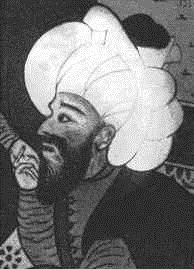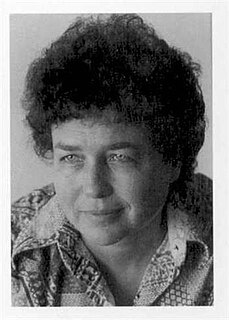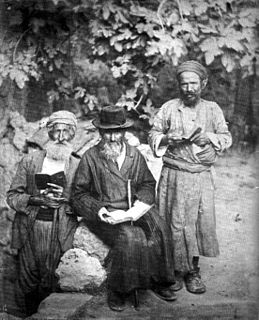
The Yishuv or Ha-Yishuv or Ha-Yishuv Ha-Ivri is the term referring to the body of Jewish residents in the land of Israel prior to the establishment of the State of Israel. The term came into use in the 1880s, when there were about 25,000 Jews living across the Land of Israel, then comprising the southern part of Ottoman Syria, and continued to be used until 1948, by which time there were some 630,000 Jews there. The term is used in Hebrew even nowadays to denote the Pre-State Jewish residents in the Land of Israel.

Tešanj is a town and municipality located in Zenica-Doboj Canton of the Federation of Bosnia and Herzegovina, an entity of Bosnia and Herzegovina. As of 2013, it has a population of 43,063 inhabitants. It is situated in the northern part of Bosnia and Herzegovina.

Haim Aharon Valero (1845–1923) was a banker, entrepreneur and a prominent figure in the Jewish community of 19th century Jerusalem. Under his direction, the Valero Bank, founded in 1848 by his father Jacob, acted as catalyst in the development of the Jewish community under Ottoman rule. The bank’s capital and financial services were employed in the acquisition of land and building, helping transform Jerusalem and nearby townships from stagnation and poverty towards the modernization of the 20th century.

An hourglass is a device used to measure the passage of time. It comprises two glass bulbs connected vertically by a narrow neck that allows a regulated trickle of material from the upper bulb to the lower one. Factors affecting the time it measured include sand quantity, sand coarseness, bulb size, and neck width. Hourglasses may be reused indefinitely by inverting the bulbs once the upper bulb is empty. Depictions of hourglasses in art survive in large numbers from antiquity to the present day, as a symbol for the passage of time. These were especially common sculpted as epitaphs on tombstones or other monuments, also in the form of the winged hourglass, a literal depiction of the well-known Latin epitaph tempus fugit.
Palestinian Jews were Jewish inhabitants of Palestine prior to the establishment of the modern state of Israel.

Science and technology in the Ottoman Empire had spanned many years. During its 600-year reign, the Ottoman Empire made significant advances in science and technology, in a wide range of fields including mathematics, astronomy and medicine.

The Second Aliyah was an important and highly influential aliyah that took place between 1904 and 1914, during which approximately 35,000 Jews immigrated into Ottoman-ruled Palestine, mostly from the Russian Empire, some from Yemen.

The Ga'aton River is a small river in the Northern District of Israel. It passes through the town of Nahariya before emptying into the Mediterranean Sea. The river runs through the main street of Nahariya, a city that takes its name from the river.
Musta'arabi Jews are Arabic-speaking Jews, largely Mizrahi and Maghrebi Jews, who lived in the Middle East and North Africa prior to the arrival and integration of Ladino-speaking Sephardi Jews following their expulsion from Spain in 1492. Following the expulsion, Sephardi exiles moved into the Middle East, and settled among their Musta'arabi co-religionists.

Ga'aton is a kibbutz in northern Israel. Located in the western Galilee, it falls under the jurisdiction of Mateh Asher Regional Council. In 2017 it had a population of 630.

Yosef Navon was a Jerusalem businessman and the man principally responsible for the construction of the Jaffa–Jerusalem railway. For his effort, Navon was awarded the Légion d'honneur from the French government, and the Medjidie from the Turkish government, where he was also promoted to the title of Bey.

Ruth Kark is an Israeli scholar and Professor of Geography at the Hebrew University of Jerusalem.

Israel Belkind was a Jewish educator, author, writer, historian and founder of the Bilu movement. A pioneer of the First Aliyah, Belkind founded the Biluim, a group of Jewish idealists aspiring to settle in the Land of Israel with the political purpose to redeem Eretz Yisrael and re-establish the Jewish State on it.
Yitzhak Ben-Hezekiah Yosef Kovo (1770–1854) was born in the large Sephardi community of Ottoman Salonica and later settled in Ottoman-era Jerusalem. In 1848 he succeeded Chaim Abraham Gagin as hacham bashi aged 78. Throughout his career he went on fundraising missions to Poland, London and Egypt. In 1854, while in Alexandria, he died. He authored many works on the Mishnah, Talmud and Shulchan Aruch and wrote responsa.

The Safed attacks were an incident that took place in Safed soon after the Turkish Ottomans had ousted the Mamluks and taken Levant during the Ottoman–Mamluk War in 1517. At the time the town had roughly 300 Jewish households. The severe blow suffered took place as Mamluks clashed bloodily with the new Ottoman authorities. The view that the riot's impact on the Jews of Safed was severe is contested.

The A.L. Monsohn Lithographic Press was established in Jerusalem in 1892 by Abraham-Leib Monsohn II and his brother Moshe-Mordechai (Meyshe-Mordkhe). Sponsored by members of the Hamburger family, the brothers had been sent to Frankfurt in 1890 to study lithography. Upon returning to Jerusalem with a hand press, they established the A.L. Monsohn Lithographic Press in the Old City of Jerusalem. At first it was situated in Bab al-Huta; it was later moved to the courtyard opposite what is today the Old Yishuv Court Museum at 6 Or Ha-Hayim Street in the Jewish Quarter, where Abraham-Leib Monsohn lived with his family. Leaving the Old City, the press was relocated to the Mamilla section of Jerusalem, and later to Yosef Ziv Street in the Tel Arza neighborhood. The Monsohn Press produced about 300 color prints per day, the only color printing done at the time in Jerusalem. In 1894 they imported a new machine which could print 1,000 copies a day—a great advance in local printing. The founders of the Monsohn press produced Jewish-themed color postcards, greeting cards, Jewish National Fund stamps, and maps documenting the evolution of the Jewish settlement in Eretz Israel in the nineteenth-twentieth centuries; religious material such as decorative plaques for synagogues, portraits of Old Yishuv rabbis such as Shmuel Salant, Mizrah posters indicating the direction of prayer for synagogues, memorial posters, and posters for Sukkot booths;, color frontispieces for books such as Pentateuch volumes and the early song collections of Abraham Zvi Idelsohn ; artistic wedding invitations; and later, government posters; and labels, packaging and advertisements for the pioneering entrepreneurs of Eretz Israel. Many of the postcards and maps can be seen online, as can the artistic invitations to his children's weddings which Monsohn published in the Jerusalem Hebrew press. The Monsohn Press received special permission from the city's rabbis to print for Christians and Moslems, so long as the material could not be used to missionize. While Eretz Israel was under Ottoman control, Abraham-Leib Monsohn also printed the maps for the Ottoman military leader Djemal Pasha, in his headquarters in Mount Scopus.

Baraachit, also spelt Brashit, is a rural town located in the Nabatiye Governorate, in the Bint Jbeil District of southern Lebanon, ca. 3.5 kilometres (2.2 mi) southeast of Tibnine and about 80 kilometres (50 mi) from Beirut. The village sits on an elevation of 710 metres (2,330 ft) above sea level. The town has a mixed population of Shi'a and Christians.
Muhammad ibn Sa'id al-Tamimi, , known by his kunya, "Abu Abdullah," but more commonly as Al-Tamimi, the physician, was a tenth-century Arab physician, who came to renown on account of his medical works. Born in Jerusalem, Al-Tamimi spent his early years in and around Jerusalem where he studied medicine under the tutelage of two local physicians, Al-Hasan ibn Abi Nu'aym, and a Christian monk, Anba Zecharia ben Thawabah. Al-Tamimi possessed an uncommon knowledge of plants and their properties, such that his service in this field was highly coveted and brought him to serve as the personal physician of the Ikhshidid Governor of Ramla, al-Hassan bin Abdullah bin Tughj al-Mastouli, before being asked to render his services in Old Cairo, Egypt. Around 970, Al-Tamimi had settled in Old Cairo, Egypt, and there prospered in his medical field, writing a medical work for the vizier, Ya'qub ibn Killis (930–991), a Baghdadi Jew who came to work in Egypt under the auspices of the Fatimids. He specialized in compounding simple drugs and medicines, but is especially known for his having concocted a theriac reputed as a proven antidote in snakebite and other poisons, which he named tiryaq al-fārūq because of its exceptional qualities.
















